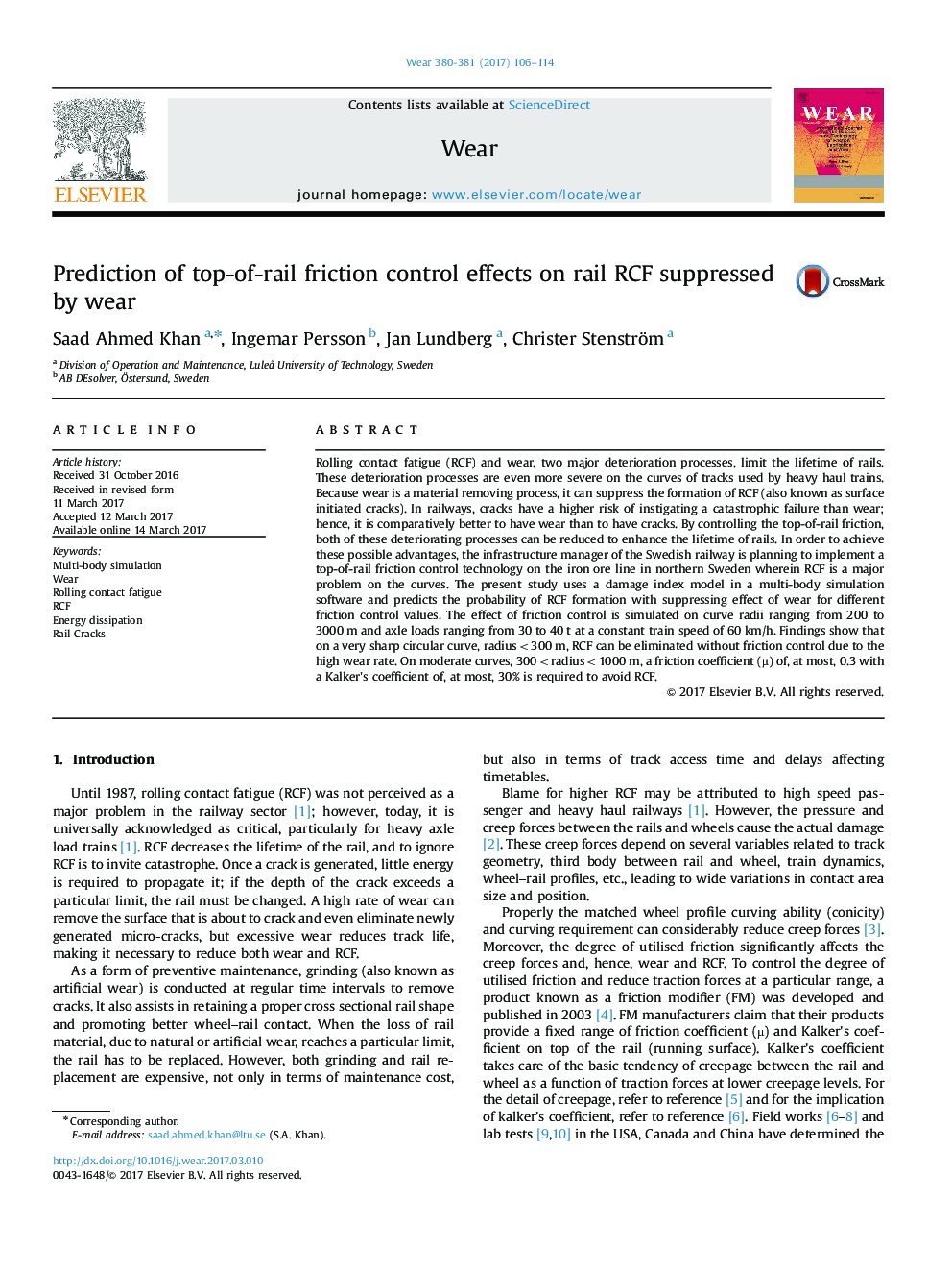| Article ID | Journal | Published Year | Pages | File Type |
|---|---|---|---|---|
| 4986496 | Wear | 2017 | 9 Pages |
Abstract
Rolling contact fatigue (RCF) and wear, two major deterioration processes, limit the lifetime of rails. These deterioration processes are even more severe on the curves of tracks used by heavy haul trains. Because wear is a material removing process, it can suppress the formation of RCF (also known as surface initiated cracks). In railways, cracks have a higher risk of instigating a catastrophic failure than wear; hence, it is comparatively better to have wear than to have cracks. By controlling the top-of-rail friction, both of these deteriorating processes can be reduced to enhance the lifetime of rails. In order to achieve these possible advantages, the infrastructure manager of the Swedish railway is planning to implement a top-of-rail friction control technology on the iron ore line in northern Sweden wherein RCF is a major problem on the curves. The present study uses a damage index model in a multi-body simulation software and predicts the probability of RCF formation with suppressing effect of wear for different friction control values. The effect of friction control is simulated on curve radii ranging from 200 to 3000Â m and axle loads ranging from 30 to 40Â t at a constant train speed of 60Â km/h. Findings show that on a very sharp circular curve, radius<300Â m, RCF can be eliminated without friction control due to the high wear rate. On moderate curves, 300
Related Topics
Physical Sciences and Engineering
Chemical Engineering
Colloid and Surface Chemistry
Authors
Saad Ahmed Khan, Ingemar Persson, Jan Lundberg, Christer Stenström,
